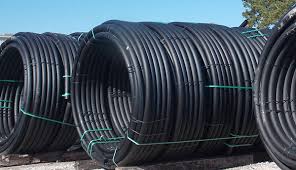Aug . 18, 2024 05:07 Back to list
HDPE Drip Irrigation Pipe Manufacturing for Efficient Water Delivery Solutions
The Manufacturing of HDPE Drip Pipes A Sustainable Solution for Agriculture
In recent years, efficient water management has become essential in agriculture, especially with the increasing threats of climate change and water scarcity. One innovative product that has garnered attention is the High-Density Polyethylene (HDPE) drip pipe. Factories dedicated to producing HDPE drip pipes are playing a pivotal role in revolutionizing irrigation techniques, leading to more sustainable farming practices.
Understanding HDPE and its Benefits
High-Density Polyethylene (HDPE) is a robust plastic known for its durability and resistance to environmental factors, including UV rays, chemicals, and corrosion. This makes it an ideal material for agricultural applications. HDPE drip pipes are designed to deliver precise amounts of water directly to the root zone of plants, reducing evaporation and runoff, which are significant issues with traditional irrigation methods.
One of the primary benefits of using HDPE drip pipes is water conservation. Traditional irrigation methods can waste a significant portion of water, either through evaporation or runoff. In contrast, drip irrigation systems can reduce water usage by up to 60%, optimizing water resources and allowing farmers to use less water without sacrificing crop yield. This efficiency is especially critical in arid regions where water is a limited resource.
The Production Process of HDPE Drip Pipes
The production of HDPE drip pipes involves several stages, each requiring precision and adherence to quality standards. Factories specializing in HDPE manufacturing typically follow a streamlined process
1. Raw Material Sourcing The primary material, HDPE resin, is sourced from reputable suppliers. The quality of the raw material is crucial, as it directly affects the performance and longevity of the drip pipes.
2. Extrusion The HDPE resin is heated and melted before being extruded into thin, flexible tubes. This process ensures that the pipes have the necessary wall thickness and strength to withstand pressure and environmental conditions.
hdpe drip pipe factory

3. Perforation After the extrusion process, the pipes are perforated to create outlets for water delivery. This step is critical, as it determines the flow rate and spacing of the water drips, tailored to the specific needs of different crops.
4. Cooling and Sizing The newly formed pipes are cooled and cut to the desired lengths. Quality control checks are integrated at this stage to ensure that the dimensions and perforations meet the required standards.
5. Testing and Quality Assurance Before the pipes are packaged and shipped, they undergo rigorous testing to assess their durability, flexibility, and resistance to external factors. Factories invest in state-of-the-art testing facilities to ensure that every batch of pipes meets industry standards.
6. Packaging and Distribution Once tested, the drip pipes are carefully packaged to prevent damage during transport. They are then distributed to agricultural markets, where they are used in a variety of cropping systems.
Environmental and Economic Implications
The use of HDPE drip pipes not only promotes water conservation but also contributes to reducing the overall carbon footprint of agricultural practices. By utilizing water more efficiently, farmers can reduce the need for water extraction, lowering energy consumption associated with pumping and transporting water.
Economically, drip irrigation systems can lead to increased crop yields and more profitable harvests. Farmers can achieve better growth rates and higher-quality produce by providing consistent moisture levels to their crops. Additionally, with the reduced labor and lower water costs associated with drip irrigation, the return on investment for these systems is often substantial in the long term.
Conclusion
As agriculture continues to evolve in response to global challenges, the production and use of HDPE drip pipes stand out as a sustainable and innovative solution. Factories dedicated to manufacturing these pipes are not just producing a product—they are fostering a new era of efficient farming practices that benefit both the environment and the agricultural economy. By embracing such technologies, the agricultural sector can pave the way toward a more sustainable future.
-
High-Quality PVC Borehole Pipes Durable & Versatile Pipe Solutions
NewsJul.08,2025
-
High-Quality PVC Perforated Pipes for Efficient Drainage Leading Manufacturers & Factories
NewsJul.08,2025
-
High-Quality PVC Borehole Pipes Durable Pipe Solutions by Leading Manufacturer
NewsJul.08,2025
-
High-Quality PVC Borehole Pipes Reliable PVC Pipe Manufacturer Solutions
NewsJul.07,2025
-
High-Quality UPVC Drain Pipes Durable HDPE & Drain Pipe Solutions
NewsJul.07,2025
-
High-Quality Conduit Pipes & HDPE Conduit Fittings Manufacturer Reliable Factory Supply
NewsJul.06,2025

